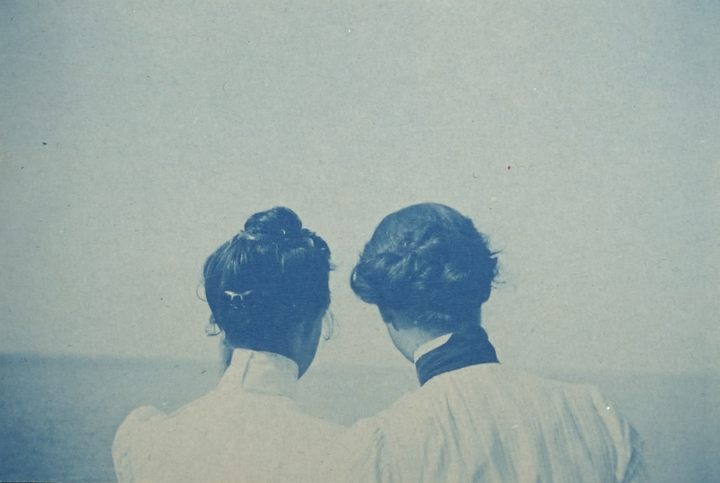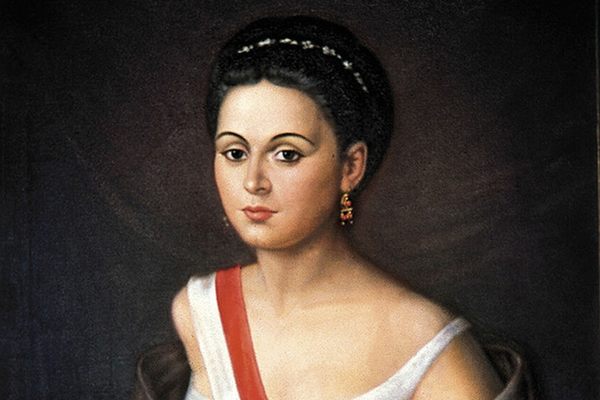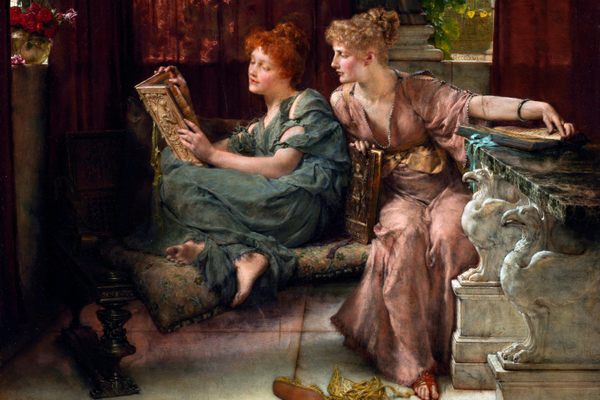
A Paradise for Single Ladies
These adventurous turn-of-the-century women announced their independence by buying their own islands in Ontario’s Georgian Bay.
Lake Huron’s Georgian Bay is home to the world’s largest freshwater archipelago, a mass of small islands studded with windswept pine trees that cling stubbornly to crevices in the weathered granite. Since the early twentieth century, this remote and rugged region, known as Thirty Thousand Islands, has attracted intrepid nature-lovers in search of an unspoiled environment with varied recreational opportunities. Some of the earliest of these hardy outdoor enthusiasts ventured forth in long skirts and large hats.
More than a century ago, a group of young, single, professional women began to vacation in the Georgian Bay. Anticipating Virginia Woolf’s famous plea for “a room of one’s own,” published in 1929, they purchased islands of their own starting in 1902. For the next two decades, these free-spirited women spent their summers boating, fishing, swimming, berry-picking, hiking, and picnicking in the Pointe au Baril area. As May Bragdon, one of these early pleasure-seekers, described it in a 1904 issue of Recreation, “we spent days and nights of unalloyed happiness among those beautiful islands.”
May Bragdon, a resident of Rochester, New York, supported herself as a stenographer and secretary, but her true passions were writing and photography. Her published writing, detailed diary entries, and candid snapshots documented the community of confident women who spent their summers in Georgian Bay. Bragdon and her companions were exemplars of what social commentators called “New Women” at the start of the new century. They were educated, independent, and freed from Victorian conventions—as demonstrated both by their determination to purchase their own islands and their vigorous outdoor activities once they arrived. This group of like-minded women built a local community and left a lasting legacy.

Rochester resident Helen Alling Davis led the way in establishing this paradise for single women. In 1902, the thirty-one-year-old gymnastics instructor stayed at the Bellevue Hotel in Pointe au Baril for several weeks. Impressed by the natural beauty and recreational opportunity offered by the picturesque islands—and having heard that an island could be purchased for $5 to $10—she promptly bought one. Although small (less than three acres), Helen’s island provided varied landscapes and spectacular views. As Bragdon enthused, it included “rocks and woods, a jungle, hills and ravines, bays and promontories.”
According to family legend, Helen declared that she would never be sainted, so she named the island St. Helena. The following summer, taking advantage of her brother Hamilton’s business connections and the low cost of local labor, Helen built a cottage on the island, which soon became a gathering place for her family members and female friends. Bragdon declared, “Saint Helen reigns supreme, and all her guests are happy.”

This initial purchase soon inspired imitators. At home in Rochester, Davis and her sister Charlotte were both members of a social club for single women, “The Perfect Little Ladies.” The “Perfects,” as they called themselves, exemplified the possibilities of new womanhood. As well-educated, self-supporting professionals, they challenged conventional gender roles, celebrated female friendship, and chose to remain single for life. In summer 1903, the sisters hosted fellow Perfects May Bragdon and Mary MacArthur, as well as another Rochester resident, Marjorie Fowler, at St. Helena. Helen’s parents, Oscar and Frances, her brother Hamilton, and her sister Katharine also stayed at St. Helena, as did other short-term guests. “Then cots, hammocks and tents overflowed,” Bragdon described the scene, “and everyone helped bake pancakes in the morning on the merry little Klondike stove.”
From their home base on St. Helena, the group spent their days exploring neighboring islands and relishing outdoor activities. As Bragdon recorded in her diary, Davis and her guests spent much of their time on the water, sailing, rowing, canoeing, fishing, and swimming. When on land, which Bragdon described as “wild, beautiful and apparently untrodden by the foot of man,” they explored the rocky islands and gathered fresh berries. Their activities whetted their appetite for camp-style meals, whether they dined on fresh-caught fish or made do with peanut butter sandwiches. “Then there were evenings of reading aloud[,] singing & playing cards or toasting marshmallows,” Bragdon recalled.

After admiring dramatic sunsets and enjoying moonlight sails, Davis’s guests, eager to possess their own vacation getaways, rose early to embark on what Bragdon called “’island shopping’ excursions.” Bragdon, MacArthur and Katharine Davis all purchased islands of their own, although Mary later sold hers, “Oneeishta” (Ojibway for “Laughing Maiden”), to Katharine. By that time, Katharine had also purchased and built on another island. Bragdon referred to Katharine’s island as “Minnehaha” (after the fictional Native American woman in the 1855 epic poem “The Song of Hiawatha”), but Charlotte Davis preferred the name “Wonderland.”
Bragdon christened her island Mandalay in honor of the poem by Rudyard Kipling. As she detailed in her diary, she “explored almost every inch” of it on her own. On another occasion, she and several other women spent the entire day there, taking “tea” on a stony outcropping, watching a stunning sunset, and finally roasting marshmallows over a bonfire.

Canadian novelist Mazo de la Roche, who stayed at the Bellevue Hotel soon after it opened in 1900, scandalized her fellow guests by going out in a rowboat with a male companion and no chaperone. But Bragdon and her female friends evinced no concern at all about maintaining restrictive gender conventions. Rather, in Georgian Bay, more than anywhere else, Bragdon confided to her diary, “I felt so happy and far away from fuss and bother!”
Attracted by both the spectacular scenery and the emancipatory atmosphere of the islands, other single women soon joined the Georgian Bay cottage community. Helen Davis’s guest Marjorie Fowler purchased an island she christened “Marjoria,” while Bragdon’s friend, Rochester high school teacher Alice Colby, bought “Onondaga” on the Hemlock Channel. Other single professional women from both the U.S. and Canada also purchased islands of their own. For instance, Oberlin College graduate and Ohio schoolteacher Mary Elmore purchased an island christened “Maymaygwan,” meaning Butterfly. From the Bellevue Hotel, Elmore wrote to fellow schoolteacher and long-term housemate Ida May Henry to enthuse about the “simply beautiful” surroundings and the delightful prospects for outdoor recreation.
The opening of Hamilton Davis’s Ojibway Hotel in 1906 created new opportunities for summer visitors. In 1907, Bragdon and her friend Gertrude Goulding, a school teacher from Glen Falls, New York, stayed there, although they spent most of their time exploring the smaller islands. By the 1920s, at least twenty single women—most of them secretaries, salesclerks, or school teachers in their twenties and thirties—were regular visitors to the Georgian Bay.

The women who vacationed in the Georgian Bay islands felt a special affinity for the lovely—and liberating—location. Bragdon waxed poetic about the islands’ natural beauty. In this idyllic setting, she declared in her 1904 article, “the cares of earth are far away, and one feels small in the bigness of the world.” More than fifteen years later, her friend and fellow Perfect Edith A. Scott enthused about the expansive environs of the Thirty Thousand Islands. “It’s the freedom and openness of it all that gets one,” the Rochester schoolteacher rhapsodized in a 1920 letter to Bragdon.
The “freedom and openness” that these women found in this Canadian archipelago a century ago still appeals to adventurous women today. And while “Saint Helen” never had children of her own, Davis family descendants still summer at St. Helena, where they have rebuilt the cabin but kept the original floor plan and many of the original furnishings. Five generations of the family—and counting—have cherished their time in Georgian Bay.



















Follow us on Twitter to get the latest on the world's hidden wonders.
Like us on Facebook to get the latest on the world's hidden wonders.
Follow us on Twitter Like us on Facebook